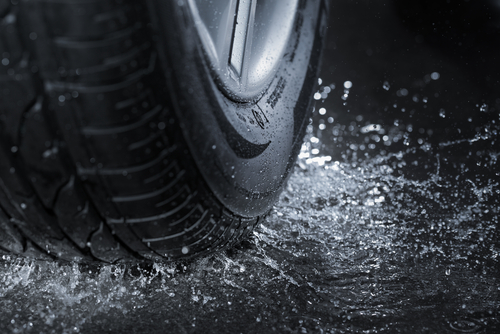When you get behind the wheel of your vehicle, you’re putting your trust in its tyres. Your tyres are the only part of your car that actually makes contact with the road—so they can have a huge impact on your overall driving experience.
Choosing the right tyres and maintaining them properly, is key to staying safe while out on the roads. Let’s take a look at some of the basics when it comes to choosing and maintaining tyres for your vehicle.
The benefits of quality tyres
Quality tyres can have a tremendous impact on a vehicle’s overall performance. From improved handling in wet or dry conditions to increased fuel economy, quality tyres provide a safer, more enjoyable driving experience.
Not only that, but they often last longer than cheaper counterparts due to their high-grade construction, so you can enjoy the benefits for even longer periods of time.
How to choose the right tyres for your vehicle
It’s important to buy the right tyres for your specific type of vehicle because they provide traction and stability on the road. Here are some tips in choosing the right tyres for your car or truck.
- Understand Your Vehicle’s Needs
The first step in selecting the right tyres for your car is understanding what kind of performance you need from them.
Are you looking for a set that will provide a smooth ride? Do you want something with better fuel efficiency? Or maybe you need tires with superior traction in wet weather?
Knowing how you plan to use them will help narrow down your options.

- Size Matters
One of the most important things to consider when choosing new tyres is size. The wrong size tyre could put you in danger while driving as it affects handling and braking performance.
To find out what size tyre is best for you, check your owner’s manual or look at one of the sidewalls of an existing tyre on your vehicle; this will tell you the width, profile height, and wheel diameter needed for replacement tyres.
You may also want to consider a slightly larger size if you want more grip on wet roads or if you plan on carrying extra loads in your vehicle.
- Type of Tyre
The type of tyre depends largely on where and how often you drive. If you mostly drive in urban areas then all-season tyres are suitable; however, if you do a lot of off-roading then off-road tyres would be better suited for that terrain.
Additionally, winter tyres offer better traction in colder climates while summer tyres are ideal if it rarely snows where you live. Once again, refer to your owner’s manual or consult with a professional mechanic if needed before making a purchase decision.
- Budget & Quality
It’s important to factor in both cost and quality when shopping for new and used tyres; higher quality does not always equate to higher price tags.
With so many different brands available today it can be overwhelming but research is key here—compare prices between various retailers before deciding which brand is best for you and your budget.
- Check Reviews & Ratings
Once you have narrowed down your list, it’s time to start shopping around for reviews and ratings from other customers who have used these particular models.
Doing this will give you an idea of how well certain brands perform in terms of durability, safety, grip on wet surfaces, etc., as well as any potential drawbacks or issues associated with them.
How to maintain your tyres for optimum safety and performance
Keeping your tyres in top condition is essential for maintaining vehicle safety and performance. From regular maintenance checks to understanding tyre pressure, here are some tips on how to properly maintain your tyres for optimum safety and performance.
- Check Tyre Pressure Regularly
Make sure to check your tyre pressure at least once a month, as under-inflated tyres can have an adverse effect on handling, acceleration, and braking. Additionally, having too much air in your tyres can lead to uneven wear patterns over time.
- Rotate Your Tyres Regularly
Another important part of maintenance is regularly rotating your tyres. This ensures that all four of them wear evenly over time and helps maximize their lifespan.
Generally speaking, you should rotate your tyres every 6 months or 5,000-7000 miles—whichever comes first—to make sure they are wearing correctly and not becoming overly worn down.
- Replace Worn Out Tyres
Finally, if you find that one or more of your tyres is excessively worn out or damaged beyond repair (such as after an accident), it’s important to replace them right away for safety reasons.
Make sure you buy new tyres that are the proper size for your vehicle; otherwise it may affect handling and other performance aspects of the vehicle as well.
Final Thoughts
The key to safe driving boils down to reliable tyres. Maintaining the right tyres on your vehicle can make all the difference when it comes to safe and efficient driving. When it comes to driving safely, having the right tyres equipped matters – so take the time now and make an effort to choose (and take care of!) the appropriate ones for your car.